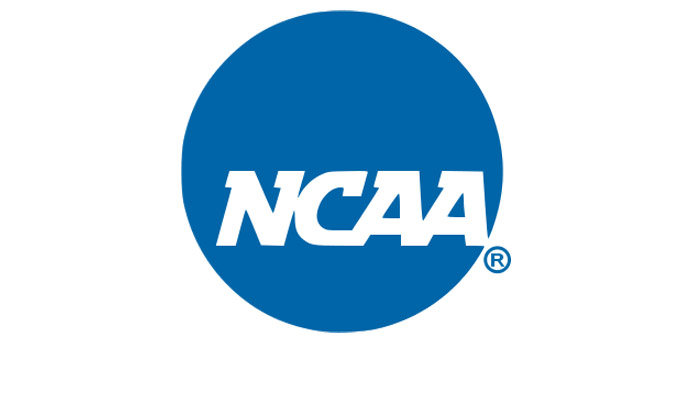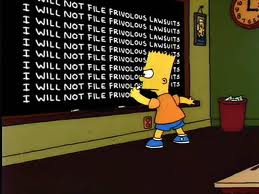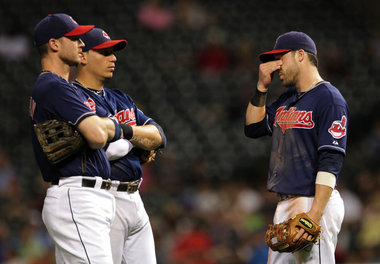 The NCAA cartel published its most recent Academic Progress Rate report and the conclusions one can draw are almost as limitless as the measuring stick is limited.
The NCAA cartel published its most recent Academic Progress Rate report and the conclusions one can draw are almost as limitless as the measuring stick is limited.
For the uninitiated, the APR is the tool used by the NCAA tools to measure what it deems the appropriate academic progress of student-athletes on athletic scholarships. A team with 100% graduation rate would have a 1000 APR. A team with a 50% graduation rate translates to an APR of 925, which makes sense, right? Like with everything else involving the NCAA, the APR is both a measure of sense and nonsense.
Each team at a school is measured over a rolling four year period to account for anomalies in a given year. For example, at Kentucky, you'd expect the APR for its basketball team to be on the low side given how specifically John Calipari recruits one-and-done freshmen. Its APR is relatively low but not low enough to get them into trouble because Calipari wisely fills out the back end of the roster with players who never play but do stick around for four years. If an APR dips below 925, then the team faces sanctions. Kentucky manages to keep it just above the threshold.
But this isn't about Kentucky. It's about the NCAA. The debate is whether or not APR is a meaningful measuring stick. Here's where it gets tricky. The only schools falling below the benchmarks in the major sports are schools of limited resources and predominately black colleges, which often are one in the same. So what we're left to conclude is that which we knew going in, achievement in academics like achievement in athletics is generally a function of money and not ability. You see the same pattern in education at every level in virtually every state, including Ohio.
What grinds about the APR is that it gives the allusion of concern about academics without the NCAA actually having to get its hands dirty and push for meaningful change. To accept the NCAA's publicly earnest view you have to accept the premise that graduation rate is the right benchmark in the first place. That's a much more debatable point.
The overarching assumption is that graduation from college is the higher purpose. It is for most but not all students, including athletes. But let's just assume for sake of argument that the point of college is to graduate and further that all colleges set relatively rigorous requirements to graduate (itself an argument worth having since colleges have long since gone from ivy tower think tanks to hard core profit making businesses). The argument for using a graduation rate benchmark is that a graduating student must have met sufficiently rigorous academic standards to get the degree thus giving him the advantage a college degree is supposed to confer on the recipient in the first place. It's a relatively compelling argument.
The other side is that graduation rate, while relevant, hardly tells the entire story of an individual's academic performance. Not all majors are created equal and if athletes, for example, are taking the absolute easiest path toward a degree then does the fact that they graduated become all that meaningful? The academic scandal currently playing out at North Carolina is just the latest in the grand tradition of clearing the path of athletic academic eligibility with phony or half-baked classes. Not to put too fine a point on it, but if the recognition is that most student-athletes, even in the money sports of football and basketball, will not play on the professional level then it is a concern if the athlete is only modestly prepared for life outside the college bubble. That's the real concern and the one that the NCAA loses in its reliance on statistics of limited relevance.
The APR is really the NCAA's high minded attempt to cover up the real scandal of major college athletics and its exploitation of student athletes, nothing more. Athletes in minor sports across the spectrum are not the issue. You can go through the NCAA's APR report and see that consistently few if any schools are even close to bumping up against the minimum APR in their minor sports. That's because these sports don't generate much in the way of revenue or publicity and the athletes are more like highly skilled hobbyists who are otherwise well integrated into the general student population and end up adopting pretty much the same academic characteristics.
It's the major money sports like football and basketball where APR is relatively meaningless except as a measure of a school's ability to keep its athletes academically eligible for a long enough period of time. The schools rely so heavily on the revenues generated by those sports that they simply cannot let them fail. It's in the school's best interest to see that the athletes have as easy a time academically so that they remain eligible and available to drive even more revenue their way. How this serves the best interest of the athletes themselves is the real issue but then again there's little about big time college athletics that serves the interests of the athletes themselves.
But let's be honest about this. The NCAA is not an academic association but a self-policing, highly random outfit created solely to further the best interests of its member schools' athletic endeavors. The biggest problems it faces tend to fall in the category of how to divvy up bigger and bigger revenue pies. College athletics is still a Wild West show and the NCAA is, at best, the drunken sheriff on the take who every once in awhile has to make a mild example of one school or another just to give off the appearance that there is some semblance of law in town.
** The debate, as always, when it comes to college athletics is whether or not the athletes are being exploited. If you look at globally by including all athletes in all programs, the answer is probably not. In a minor non-revenue sport the trade off of a free or mostly free education in exchange for your talents on the field or the court still seems relatively fair. It's the major sports of football and basketball in particular at the big schools where the equation tips far more in favor of the schools. The millions generated by the athletes dwarf the value of the education unless you have an egalitarian or NCAA view that education in and of itself is invaluable.
The debate, as always, when it comes to college athletics is whether or not the athletes are being exploited. If you look at globally by including all athletes in all programs, the answer is probably not. In a minor non-revenue sport the trade off of a free or mostly free education in exchange for your talents on the field or the court still seems relatively fair. It's the major sports of football and basketball in particular at the big schools where the equation tips far more in favor of the schools. The millions generated by the athletes dwarf the value of the education unless you have an egalitarian or NCAA view that education in and of itself is invaluable.
Still, let's not completely devalue the athletic scholarship at a micro level. The population these often serve are well entrenched 99 percenters. College is expensive and getting more so everyday and you can't blame a parent who pushes his kid hard in order to obtain one even as you roll your eyes at the parent's creepiness for doing so.
But there are limits, no? Last week in suburban Philadelphia a parent sued the high school track coach, the school's principal and anybody else he could think of because junior got kicked off the track team.
The problem was that junior, in this case Ervin Meyers, Jr., got kicked off the team because of unexcused absences. Dad, in this case Ervin Meyers, Sr., sort of acknowledges that junior missed some practices (he says essentially that he thought they were excused) but isn't buying the rationale for junior's dismissal though he doesn't offer any other specific reason why a coach would otherwise dispense. He accuses the defendants of bullying his son by kicking off the team and otherwise interfering with his "right" to participate in track.
I could point out the obvious, that extracurricular activities by definition aren't a right but a privilege that's revocable for, among other things, rules violations, but what would that serve? Dad is concerned that junior is losing out on the possibility of getting a college scholarship and sets his demand for economic damages at a cool $40 million. Maybe the NCAA is right. If a college education really is worth $40 million then scholarships are a good trade off.
Part of the problem here is the litigious nature of our society but that's not going to change. Indeed, Dad filed this lawsuit on his own without a lawyer. That's how litigious our society has become and how easy it really is to file a lawsuit. The other part of the problem is just as obvious. Dad is a jerk and instead of teaching junior the value of abiding by team rules he essentially reinforces jerk behavior in junior by filing a lawsuit that seeks in essence to validate said jerk behavior.
The other thing this stupid little lawsuit demonstrates is that the stakes in athletics are high and getting higher. They aren't a means to an end but the end game itself. Dad wants junior to get a college scholarship because he thinks that's the best ticket to even greater riches on the sporting field and not because he gives a whit about the actual education part of college. In that, though, I can't blame Dad all that much. He's just the most recent proof of the collateral damage the NCAA causes by giving very little actual concern about academics and where their rightful place should be in the student athlete equation.
**
 In still another development that sounds like it isn't related to any of this but really is, Bloomberg on Monday had a report on the burden put on every college student in the form of ubiquitous "activity fees" to support the school's athletic programs. The Bloomberg story was based on a study by David Ridpath, a professor from Ohio University.
In still another development that sounds like it isn't related to any of this but really is, Bloomberg on Monday had a report on the burden put on every college student in the form of ubiquitous "activity fees" to support the school's athletic programs. The Bloomberg story was based on a study by David Ridpath, a professor from Ohio University.
According to Ridpath's study, these activity fees are hardly uniform across the spectrum. Not surprisingly it is the poorer colleges from the smaller conferences that charge students the most. The bigger colleges charge the least. Not surprisingly, these smaller conferences are full of students already shouldering an increasingly higher debt burden to go to college in the first place. I guess the boards of trustees at these colleges figure "what's another $1500 per year on top of what they already have to borrow just to make tuition and room and board payments?" I'll do the math for them. The answer is about another $64 per month on the average 10 year school loan. That may not sound like much unless you're a newly minted graduate struggling to find an entry level job.
This is again part of the collateral damage of big time college athletics. Consider Ridpath's findings. He says that in the Big Ten, students pay about $61 a year in activity fees to support the athletic programs or about 4% of what students in the Big South or Mid American conferences pay. The reason seems straightforward enough. Big Ten teams have very lucrative ticket, concession, parking and merchandising revenues, not to mention the millions doled out to each team by the various bowls. Teams in the MAC are essentially competing with the Big Ten on the same stage but can't even come close to approximating their revenue streams. MAC stadiums are rarely full, with all the parking and concessions implications that it carries, and they don't make much during bowl season. It's not a surprise then that these schools would put the burden back on the students in the form of direct assessments.
The real implication of this is pretty clear. It's an unsustainable business model. College athletics even at the Division I level already is pretty neatly divided between the haves and the have nots. The NCAA just hasn't made it official. When the business model breaks, a fundamental shift will occur. The haves will separate themselves further into what amounts to a Super Division I classification and maybe that's for the better.
But what really grinds in the interim is that until the inevitable happens, students at these smaller schools are being sold the notion that they are on the same field as the big boys but financially that isn't even true. It makes the revenue disparities between teams in Major League Baseball look positively quaint by comparison. The NCAA has an obligation to ferret out just these kind of problems but instead divides its time between creating public window dressing about the welfare of students and schools while contriving private almost nefarious ways to grow the pot ever bigger for those already enjoying the riches. That's why the NCAA is a cartel. It consolidates power with an iron fist and works for the benefit of the few at the expense of the many.
**
So we know the NCAA is a problem, but the real question to ponder this week: If the NCAA were to crawl back into the dirty hole it created and simply disappear, what would take its place?




 How bad is it right now to be a Cleveland sports fan?
How bad is it right now to be a Cleveland sports fan? I wouldn't say that the Cleveland Browns are under siege at the moment, but that's only because they are perpetually under siege. Having spent nearly a decade and a half in a bunker will give anyone a bunker mentality. Still, all the bad press flowing from Berea these days suggests that nothing much has changed and also that the Browns really could use a better media rep.
I wouldn't say that the Cleveland Browns are under siege at the moment, but that's only because they are perpetually under siege. Having spent nearly a decade and a half in a bunker will give anyone a bunker mentality. Still, all the bad press flowing from Berea these days suggests that nothing much has changed and also that the Browns really could use a better media rep. On Tuesday night, the Cleveland Indians beat the Oakland A's 1-0. It was the second straight win for the Tribe over the As. It also was the team's 8th win in their last 9 games and pushed their season record to 16-14. Overall, a decent start to the season, right? The answer depends on what you're measuring.
On Tuesday night, the Cleveland Indians beat the Oakland A's 1-0. It was the second straight win for the Tribe over the As. It also was the team's 8th win in their last 9 games and pushed their season record to 16-14. Overall, a decent start to the season, right? The answer depends on what you're measuring. Remember the beginning of Raiders of the Lost Ark?
Remember the beginning of Raiders of the Lost Ark?